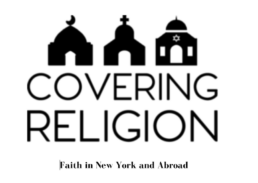
BELFAST, Northern Ireland – The St. Patrick’s Day Parade here this year featured the expected shamrocks, green hats, traditional Irish dancers and a man dressed as a leprechaun. However, participants also included members of communities not commonly associated with the ultra-Christian, Anglo-Saxon stereotype of Northern Ireland. One of these groups floated down the street in bright, flowy fabrics and glistening gold jewelry: a group of Bollywood-dancing women from the Indian Community Centre in Belfast.
In recent years, Northern Ireland’s population has become more heterogeneous. Immigrants from India have been coming since the 1930s, but only in the last 10 years has the number truly grown, rising from 1,500 in 2001, up to around 10,000 people in 2025. As of 2021, over 4,000 of them are Hindu, the second largest non-Christian religious group in the country behind Islam. As the defining features of the Northern Irish people become more diverse, interactions between Christians and non-Christian religious groups are creating a welcoming, multicultural atmosphere that counteracts the religious tension of Northern Ireland’s past.
The heart of Hindu life in Belfast is the Indian Community Centre, which was established in 1981 in an old Methodist church that had been abandoned during the period of strife known as the Troubles. The center rests in the Protestant neighborhood of Shankill, but has a clear view of the Catholic neighborhood New Lodge right across the street. Dr. Satyavir Singhal, chairman of the community center, emphasizes that Hindus focus on peace and welcoming others, and do not get involved in the religious tensions that sometimes flare up between the two Christian communities.
The Belfast community center is mainly made up of Indian immigrants, but another expression of Hinduism in Northern Ireland features devotees who are western converts to the faith. This is the temple at ISKCON Belfast, on the outskirts of the city, which comprises Hare Krishna devotees. ISKCON stands for International Society for Krishna Consciousness.
Sree Kudithipudiis, director of ISKCON Belfast, said Hinduism is “an umbrella term for a diverse selection of traditions [that] have branched and multiplied.” Hare Krishna is considered by its followers to be the original, unchanged faith at the center of this multitude of beliefs, focusing on a person’s individual relationship with their one true God: Krishna.
In addition to their Belfast location, the Hare Krishna sect also has a temple about 90 miles from Belfast on an island in the middle of a lake in Fermanagh and Omagh.
Kathleen Porter, whose spiritual name is Kanaka manjari dasi, works on Krishna Island. Porter is a western convert to Hare Krishna but doesn’t see many other Irish people converting. “Irish people are easygoing, but they’re quite traditional,” she said. She believes this is why most who come to Krishna Island hail from other parts of the world.
Chaitanya Chandra das, another devotee working at Krishna Island, said that while this may be true, large strides have been made since he converted to Krishna Consciousness in the 1980s. He said that 40 years ago, Hare Krishnas were shunned by the Catholic Church, but in recent years, “the atmosphere changed.” As the Irish people became less religious, those who were still in search of a spiritual connection became more accepting of those practicing Krishna Consciousness.
Saint Patrick’s Day wasn’t the only celebration in March for Irish Hindus. It was also Holi — the Hindu Festival of Colors. Holi is celebrated by Hindus and non-Hindus alike, welcoming spring and celebrating life and joy for all.
The day before Saint Patrick’s Day, members of the ISKCON Belfast Temple spilled out of the temple and onto the lawn, stepping over dozens of pairs of shoes left at the door in order to find their own. The temple was celebrating Holi from a Hare Krishna point of view. The crowd of devotees lined up for the large assortments of curries, vegetables and side dishes set out buffet-style on the lawn. A large tarp rested on the grass, with chairs surrounding it. Devotees of all ages congregated on and around the tarp as they finished their meal.
As those eating began to wrap up, Sree Kudithipudiis swept past the tarp with a large basket filled to the brim with tiny pouches of color. The children took notice first, clambering up out of their seats to line up behind her as the pouches were passed out.
The commotion started slowly. One or two plums of color exploded in the air. A few more started to pop up, with children yelling “Happy Holi!“ before dousing each other in the pigment. Gradually, then all at once, adults started to rise and grab pouches of their own. Soon, there was gleeful pandemonium on the tarp. People of all ages shouted “Happy Holi!” before fingerpainting each other with the pigment. Rambunctious devotees threw handfuls of it like baseballs. Within minutes, every person, from children to the elderly, was covered in a rainbow coating of powder. Members of the Police Force of Northern Ireland (PSNI) who came to celebrate with the Hindu community laughed at each other’s stained uniforms and took photos with the devotees.
Stewart, a young man with a long blond ponytail, stood with Kudithipudiis. Covered head to toe in color, he claimed to be a proud Irish dancer. He isn’t Hindu or Hare Krishna, but came to experience the holiday and meet the community at ISKCON Belfast. As the Bollywood music playing picked up, Stewart started to dance. “I can jig to any style of music,” he said excitedly, his feet kicking in time to the rhythm. Devotees nearby took notice and cheered him on as the sun began to set.
Photo at top: Devotees at ISKCON Belfast play on the tarp, throwing handfuls of a powder called “color” at each other during a Holi celebration on March 16. (Photo by Laine Immell)
